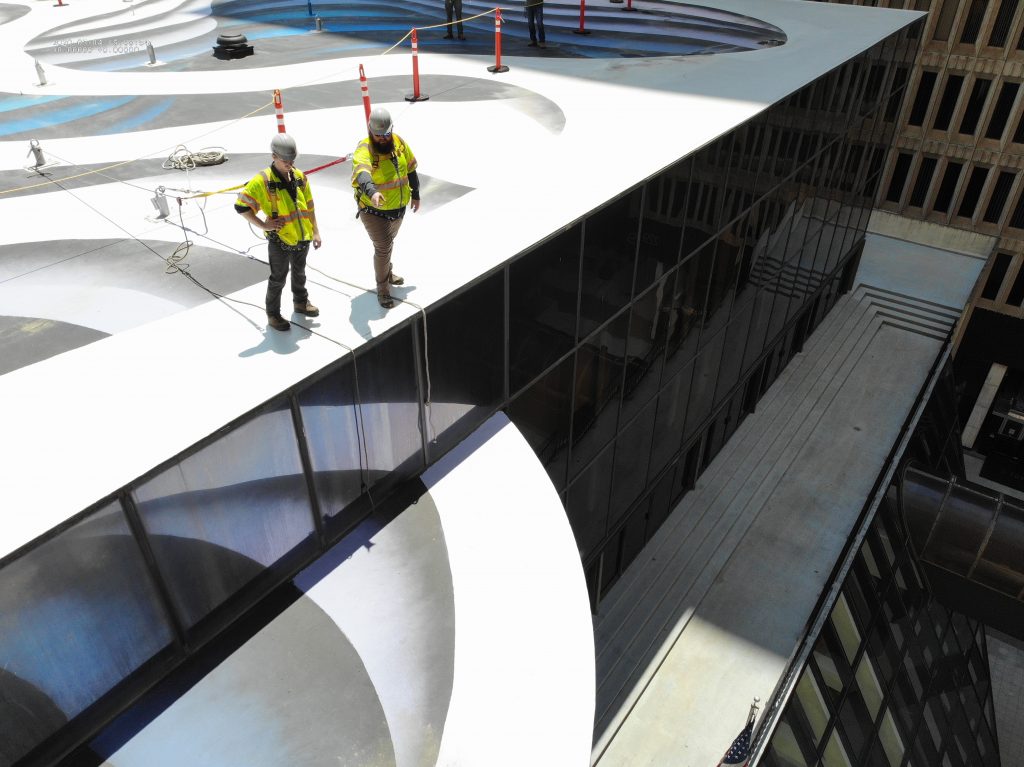
Health and safety legislation began at the state level in 1877 in Massachusetts, and by the 1930’s, all states had some form of regulation. US Congress officially created OSHA under the Occupational Safety and Health Act of 1970, with its first standard being published in May of 1971.
OSHA Standards are split into many different parts based on industry. Two of these parts are 1910, which governs general industry (Restaurants, Retail stores, Mechanics, etc.) and 1926, which specifically governs the construction industry.
What are OSHA Fall Protection Standards?
In order to provide a safe workplace, Building Owners, Property Managers, Architects, Planners, and Engineers are required to incorporate safe design measures to eliminate, prevent, or otherwise control fall hazards in the design phase.
There are many options for reduction of fall hazards, but the ultimate goal is total elimination of hazards wherever possible. One such method of fall hazard elimination is the incorporation of ground support equipment into the mechanical design of the building, eliminating the need to go on the roof to inspect or maintain equipment.

How Can Fall Risks Be Reduced?
Another such method of fall hazard elimination is the incorporation of interstitial space into the design of the building, which provides a full-fledged walking surface for inspection of elevated equipment.
Parapets and portable guard rails do not completely eliminate fall hazards, but do offer strong protection.
Presumably harmless aspects of a building’s roof can still represent fall hazards. Features such as skylights should be caged or covered to prevent workers from falling through them.
Fall Protection systems that are classified as “warnings” do offer some protection, but rely purely on human diligence. A warning line can be used, or a designated safety monitor who actively overlooks working conditions and can warn other workers when they are approaching a fall hazard.
Remember the ABCD’s of Fall Arrest Systems!
- Anchorage
- Body Support
- Connectors
- Deceleration Devices
All components of your fall protection system should be thoroughly inspected before use.
Fall/Travel Restraint systems utilize a combination of an anchorage, anchorage connector, and lanyard. This system eliminates the possibility of an employee going over the edge of a walking-working surface.
Ladders come in two varieties – portable and fixed. There are two major guidelines to follow when using a portable ladder: you must keep three points of contact with the ladder at all times, and your belt buckle should never be extended past the side rails of the ladder.
Portable ladders should be kept at 75 degrees (a 4-to-1 ratio) and the side rails should extend at least 3 feet above the upper level. Ensure that the ladder is secured at top and bottom, and that it is placed on a stable surface. Always follow manufacturer recommendations, and inspect your equipment before use.
Guardrails are required to be 42 inches tall, plus or minus 3 inches. A toe board should be present at the bottom of the rail, at least 3.5 inches tall, to prevent items from being kicked off to fall on people or property below.
Industrial Rope Access is a form of positioning that allows inspection of hard-to-reach locations without the need for scaffolding, cradles, or an aerial work platform.
Innovative Engineering Inc. Can Provide Efficient Fall Protection
Innovative Engineering Inc. is a trusted Structural Engineering resource of facility owners and managers of all sizes, including some of those with the nation’s largest real estate portfolios. We strive to be a true partner to our clients, providing them with honest assessments, and more importantly, sound solutions.
“Innovative Engineering Inc. (IEI) has been a trusted resource for our structural and parking garage repair and restoration needs for several years. I have personally worked with the firm as long ago as 2001. We have found IEI to be very responsive and easy to work with. Their work has been accurate, thorough, on time, and within budget. We look forward to continuing our relationship with them.” – Sarah Peek, Emory University Hospital Midtown
Contact us today for our expert advice and knowledge about fall protection, and to provide OSHA Competent Person Training. Our experts are standing by to help you!
